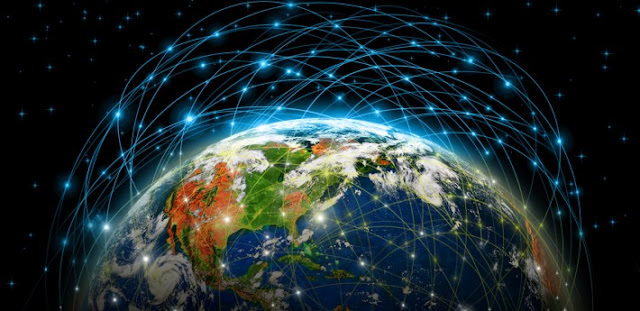The Rise of Geographic Information System (GIS) with Artificial Intelligence
Introduction:
In recent years Neural
computing progressing at an exponential pace and advances in Deep learning and
Artificial neural nets are rapidly replacing traditional computing framework.
Neural computing is going to be next level paradigm shift in computer science.
As new neuromorphic hardware and innovation in neural software techniques
become available, it’s going to be a fundamental platform for future computing
infrastructure. Artificial
neural nets are networks of neurons that learn, adapt, predict,
understand and extract patterns from raw data just like biological neurons in
the human brain. Deep artificial neural nets can learn complex functions and
extract multidimensional complex features from raw data.
Technology used:
Artificial neural nets
and techniques of Deep
learning to train deep networks are becoming dominant in specialized
tasks like natural language processing, image processing, language translation
and financial predictions and many more interesting tasks. These technologies
can also be applied to geospatial data of satellite images, data with latitude-longitude
information, climate data, geotagging data to manipulate and make predictions
for various applications. New optimization techniques and powerful neuromorphic
hardware can add an extra layer to understand geospatial data in time series
manner and uncover the tremendous benefits hidden inside GIS data.
Possible Applications:
1. Predictions and remote
monitoring-
The neural system can
handle complex weather and climate imagery data patterns that humans can’t
process at large scale in real-time and come up with solutions for problems
like climate change, air pollution, water pollution and forest management using
geospatial data.
This neural framework can
optimize on land data, agriculture data, regional-based crop data,
regional-based financial data to maximize economic benefits for society.
Almost every connected
device that uses GIS application software can use a neural system as a platform
to predict, adapt, learn and make decisions for end users.
Neural Geospatial data
system can be a core engine for self-driving vehicles and drones to adapt and
manipulate an environment in a real-time manner using all kind of GIS data.
3. Geographic Consumer
behavior-
In today’s competition
age understanding consumer is key for any organization, Neural structures can
learn and make predictions of consumer behavior using geographic data and come
up with specialized regional solutions.
Neural based systems can
create an ecosystem around various GIS applications and build a knowledge base
to take effective and valuable decisions for tasks that require geographic
information and expertise. This neural system that learns on their own can come
up with new usage of GIS data that we can’t even imagine today!!
Pros and Cons:
Pros
– An amazing thing about
neural nets is that it can be applied to any problems by designing cost
function and it can learn on their own which is very useful for saving human labor,
time and energy.
-This technology will
create new resources, enhance resource management, improve a quality of life
and build better social structures among communities.
-As in the case of many
technologies, new jobs, goods and new services will emerge thus creating a
prosperous economy.
Cons
– Rapidly increasing
computation power and AI (neural based) will become a very strong tool soon and
evil groups can also use this technology to harm society.
-This technology uses
lots of geospatial and other data so it will destroy human privacy which can be
uncomfortable in some situations.
Conclusion:
In the 19th century when
technology called ‘Electrolysis’ was not yet invented, aluminum was so rare and
precious metal than gold and platinum because of lack of technology. Today we
can use Aluminum for many uses in the most abundant way thanks to Electrolysis
technology. Thus, It’s not about a scarcity of resources but it’s about to
solve a lack of technology to extract resources.
Neural artificial
intelligence (AI) is going to be an essential part of our life from
education to major sectors like healthcare, energy, transportation,
exploration, politics, and manufacturing. Today humans are heading towards new
abundance created by computation and AI technologies on top of Big Data. In
near future, neural artificial intelligence will drive innovation and solutions
in major problems like climate change, healthcare to create a more
knowledgeable, peaceful and healthy society by making a prosperous and
meaningful life for humanity.




Comments
Post a Comment